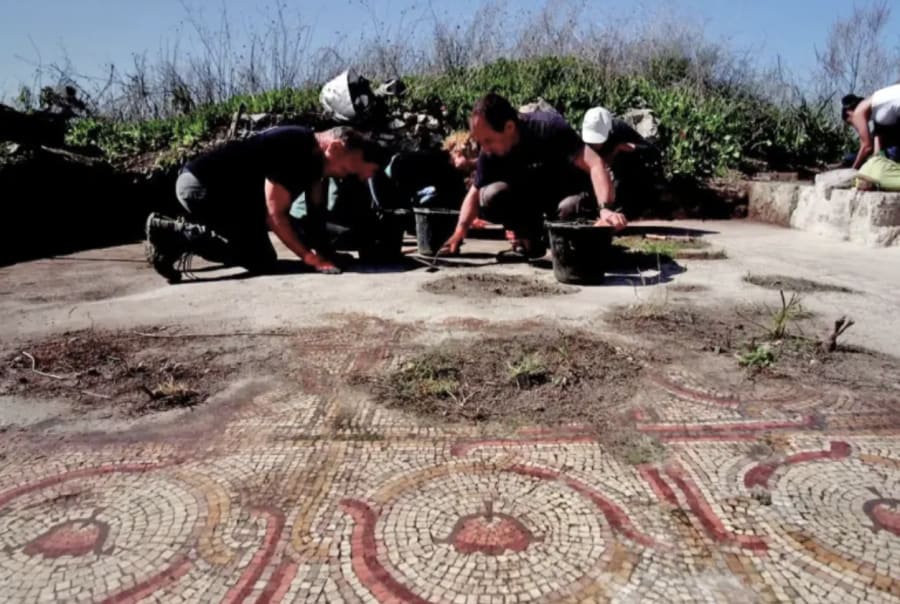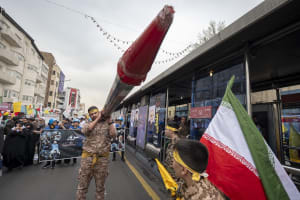Roman-era church mosaic uncovered in central Israel
Mosaic features colorful flower designs, which archaeologists believe were inspired by local flora

Archaeologists from the Israel Antiquities Authority announced on Sunday that they have uncovered a Roman-era church mosaic floor.
The site, originally discovered in the 1980s, is found along the Israel National Trail outside the central Israeli town of Shoham.
The ancient church mosaic floor features colorful flower designs, which archaeologists believe were inspired by local flora.
“It’s quite feasible that the mosaic artisan sat here and was inspired by the anemones flowering all around him,” said Yair Amitzur, an IAA archaeologist.
“When we first came to the site, the mosaic was covered over with earth and weeds. Over the last month, we have been uncovering and cleaning up the site together with the local community. We are working here among a carpet of flowering anemones,” Amitzur said.
Anan Azab, director of the IAA’s central district, said the site was likely settled before or during the Iron Age.
“It seems that the site was settled from the Iron Age or earlier, possibly as early as the Chalcolithic period, and down to the Islamic period,” said Azab.
Shoham Mayor Eitan Petrigo welcomed the news.
“The new site is located in the heart of the Shoham High-Park Logistic Center, and I have no doubt that it will be a center of attraction for the local residents and for visitors,” he said.
The mayor thanked archaeologists and the local students who volunteered to work on the project.
“I am grateful to the Israel Antiquities Authority for the initiative to uncover this fascinating site, and I thank the local pupils who participated in the project,” Petrigo said.
While Israel, the Holy Land, is tiny in size, it is rich in history. Consequently, there are many historically important archaeological sites concentrated in this tiny sliver of land on the eastern coast of the Mediterranean Sea.

The All Israel News Staff is a team of journalists in Israel.














